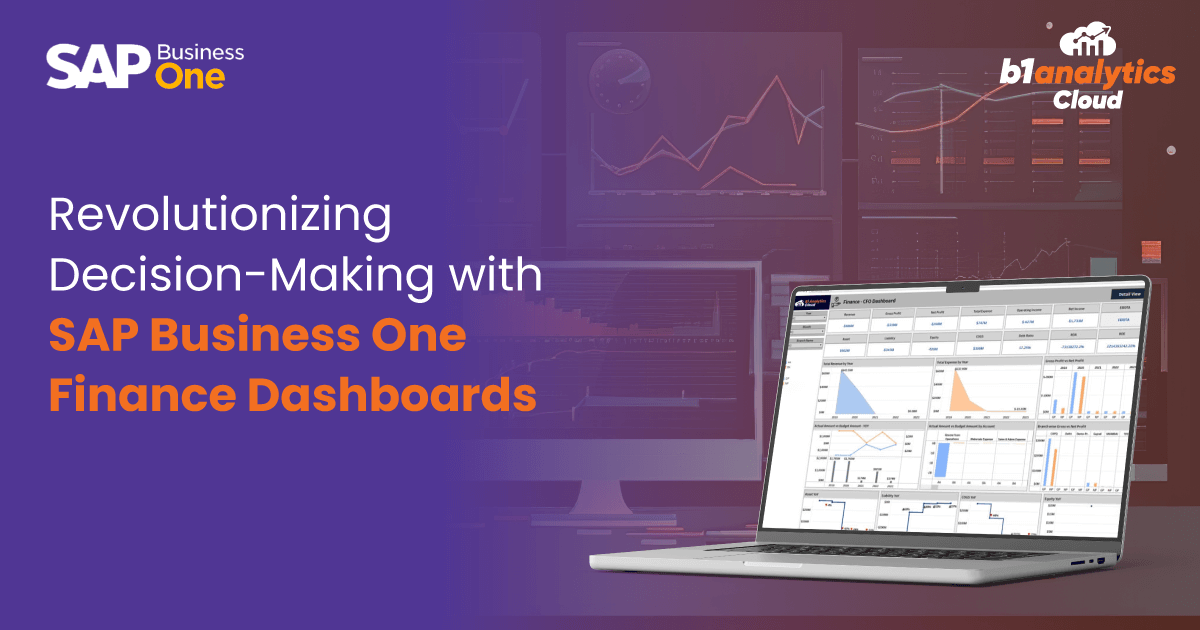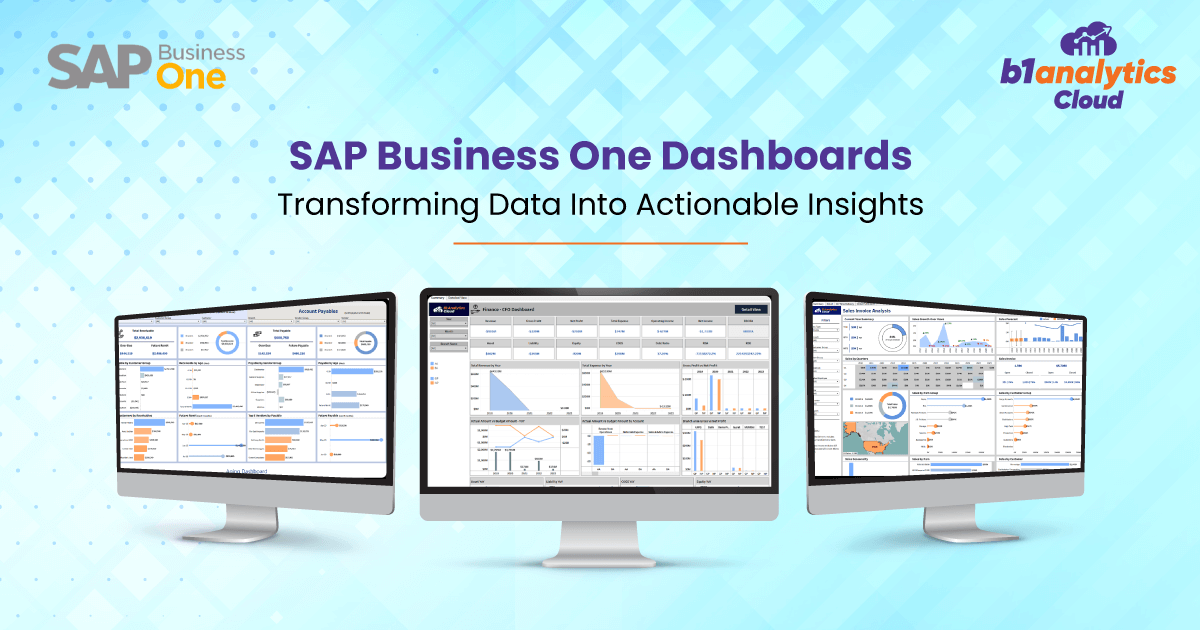Revolutionizing Decision-Making with SAP Business One Finance Dashboards
In today’s dynamic business landscape, financial management is crucial for driving growth and sustainability. SAP Business One Finance Dashboards emerge as indispensable tools, empowering businesses to gain real-time insights into their financial performance and make informed decisions. Let’s delve into the world of SAP Business One Finance Dashboards and explore how they revolutionize financial management with the latest trends.
SAP Business One Finance Dashboards
SAP Business One Finance Dashboards are comprehensive tools integrated within the SAP Business One ERP system, specifically designed to provide a consolidated view of financial data and key performance indicators (KPIs). These dashboards enable finance professionals to monitor financial health, analyze trends, and identify opportunities for improvement, all in real time.
Key Features and Benefits
Real-Time Financial Insights
SAP Business One Finance Dashboards offer real-time visibility into critical financial metrics such as revenue, expenses, cash flow, and profitability. This enables finance professionals to make timely decisions and take proactive measures to optimize financial performance.
Customizable Dashboards
Users can customize SAP Business One Finance Dashboards to align with their specific financial reporting requirements. Whether it’s tracking budget vs. actuals, analyzing sales margins, or monitoring accounts receivable/payable, these dashboards can be tailored to display relevant KPIs and metrics.
Interactive Data Visualization
With interactive charts, graphs, and drill-down capabilities, SAP Business One Finance Dashboards facilitate in-depth financial analysis. Users can explore trends, compare performance across different time periods, and identify areas of improvement with ease.
Comprehensive Financial Reporting
SAP Business One Finance Dashboards offer a wide range of pre-built reports and templates for financial reporting, including balance sheets, income statements, cash flow statements, and more. Users can generate customized reports to meet specific reporting requirements and regulatory compliance.
Mobile Accessibility
SAP Business One Finance Dashboards are accessible on mobile devices, allowing finance professionals to stay connected and informed while on the go. Whether it’s reviewing financial reports during a meeting or monitoring cash flow while traveling, users can access critical financial data anytime, anywhere.
Latest Trends in SAP Business One Finance Dashboards
Predictive Analytics
With the integration of advanced analytics and machine learning capabilities, SAP Business One Finance Dashboards can now provide predictive insights into future financial trends and performance. This allows finance professionals to anticipate risks, identify opportunities, and make proactive decisions to drive financial success.
Integration with AI-powered Solutions
SAP Business One Finance Dashboards are increasingly integrating with AI-powered solutions to enhance financial forecasting, budgeting, and planning processes. By leveraging AI algorithms, these dashboards can analyze large volumes of financial data and provide actionable insights for better decision-making.
Enhanced Data Visualization
The latest trends in SAP Business One Finance Dashboards focus on enhancing data visualization capabilities with advanced charting options, interactive dashboards, and dynamic visualizations. This enables finance professionals to present financial data in a more engaging and intuitive manner, facilitating better understanding and decision-making.
Cloud-Based Dashboards
As businesses increasingly adopt cloud-based ERP solutions, SAP Business One Finance Dashboards are also transitioning to the cloud. Cloud-based dashboards offer greater flexibility, scalability, and accessibility, allowing finance professionals to access financial data from any device, anywhere with an internet connection.
Conclusion
SAP Business One Finance Dashboards are indispensable tools for finance professionals, enabling them to gain real-time insights into financial performance and make informed decisions. With customizable dashboards, interactive data visualization, and integration with the latest trends such as predictive analytics and AI-powered solutions, these dashboards empower finance professionals to drive financial success and ensure long-term sustainability for their businesses. By leveraging SAP Business One Finance Dashboards, businesses can stay ahead of the competition and thrive in today’s rapidly evolving financial landscape.

